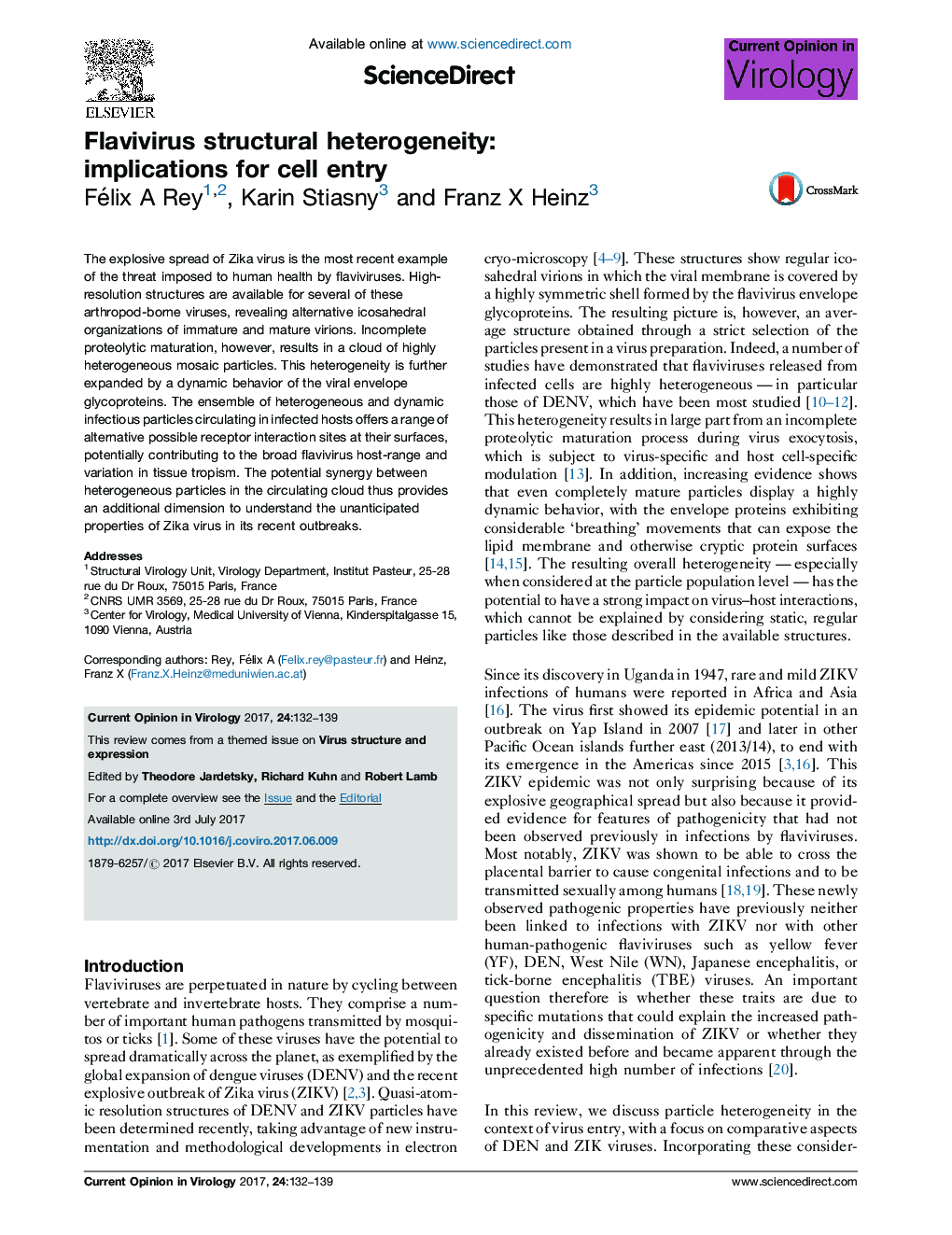| کد مقاله | کد نشریه | سال انتشار | مقاله انگلیسی | نسخه تمام متن |
|---|---|---|---|---|
| 5546224 | 1555902 | 2017 | 8 صفحه PDF | دانلود رایگان |

- Virion heterogeneity arising from incomplete maturation and particle dynamics.
- Heterogeneous particle populations may synergistically expand flavivirus tropism.
- Partially mature viruses appear as important players in natural transmission cycles.
- Exposure of viral membrane patches is crucial for entry via apoptotic mimicry.
- Concentration of putative adaptive changes in the immature Zika virus protein prM.
The explosive spread of Zika virus is the most recent example of the threat imposed to human health by flaviviruses. High-resolution structures are available for several of these arthropod-borne viruses, revealing alternative icosahedral organizations of immature and mature virions. Incomplete proteolytic maturation, however, results in a cloud of highly heterogeneous mosaic particles. This heterogeneity is further expanded by a dynamic behavior of the viral envelope glycoproteins. The ensemble of heterogeneous and dynamic infectious particles circulating in infected hosts offers a range of alternative possible receptor interaction sites at their surfaces, potentially contributing to the broad flavivirus host-range and variation in tissue tropism. The potential synergy between heterogeneous particles in the circulating cloud thus provides an additional dimension to understand the unanticipated properties of Zika virus in its recent outbreaks.
284
Journal: Current Opinion in Virology - Volume 24, June 2017, Pages 132-139